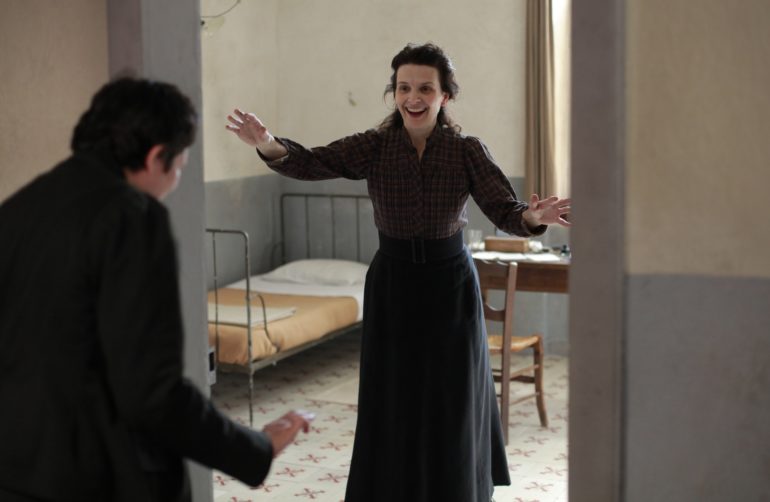How many true stories in film feel ‘true’? Did The Four Seasons continuously narrate their lives and break into song? (You can read the Scannain verdict on Jersey Boys here.) Often, a biopic’s scope denies it insouciance. The best biopics focus on a (relatively) short period of time, or a few key events. A biopic screenwriter must do their research and find the real meat of the story beyond the predictable key tragedies and formative moments. For example, in Camille Claudel 1915, we never once see the famed sculptor (Juliette Binoche) put chisel to stone. We never see her in a Kiss-inspiring tryst with Rodin. We meet her in Montdevergues Asylum, downtrodden and paranoid. In filmic terms, Claudel’s tale is closer to the tragedy of Corbijn’s Control. It isn’t uplifting, but it is true.
Anyone who’s seen Bruno Nuytten’s handsome 1988 biopic Camille Claudel would be forgiven for thinking another film moot. It’s a big, bold interpretation, with Isabelle Adjani on intense form (though perhaps a step or two down from the impressive histrionics of Possession). CC1915 starts where Nuytten’s film ended. Admitted to Montdevergues in the depths of paranoia, Claudel is a broken woman. She yearns for release, and attempts to convince her doctor (Robert Leroy) of her sanity. Initially, Binoche invests Claudel with a fussy energy that makes her stand out from the placid gallery of unfortunates around her. Her disdain for her surroundings and fellow inmates is matched by her paranoia. She insists on cooking her own food, and can’t bear to be in the company of the other patients. Montdevergues seems haunted, silent and crumbling. War rages a few hundred miles away, and within the heads of the inmates.
All Camile’s hopes are pinned on an impending visit by her brother Paul (Jean-Luc Vincent). As the man who had her committed, he’s unlikely to change his mind, but Camille stubbornly clings to the prospect of freedom. The sibling’s meeting is the central scene, both chronologically and narratively, with Dumont crafting his dialogue from letters between the two; many exchanges are lifted verbatim. Dumont makes the most of the intimate knowledge with which history has left us, giving proceedings an weight and urgency lacking in so many other biopics. Claudel’s mental state is not a hurdle to be crossed on the path to success; it is a true burden to doom her for life. Binoche’s tearstained face retains its nigh-unmatched capacity to break hearts. Dumont aids Binoche in grounding her vexations by making the asylum both handsome and decrepit. Whitewashed walls look ready to crumble, and most of the patients spend their days in silence, not least because some of them can barely speak at all. The lack of a score and the oppressive naturalism of DP Guillaume Deffontaines (dazzling sunshine, foggy nights) only adds to the claustrophobia.
Claudel’s stubborn One Flew Over The Cuckoo’s Nest-alike reticence is slowly but gradually replaced by increasing acceptance, resignation and even bouts of succumbing to her predicament (A scene in which Claudel dances her hallelujahs down the aisle of a church walks the line between joyful and disturbed). CC1915 suggests at Claudel’s hospitalisation being more hindrance than help to her. It hints at lurches into Titicut Follies territory, but the primary impetus of Camille Claudel 1915 is truth rather than scandal. It’s a heady, heavy reminder that great artists will suffer for, and perhaps because of, their chosen medium.

